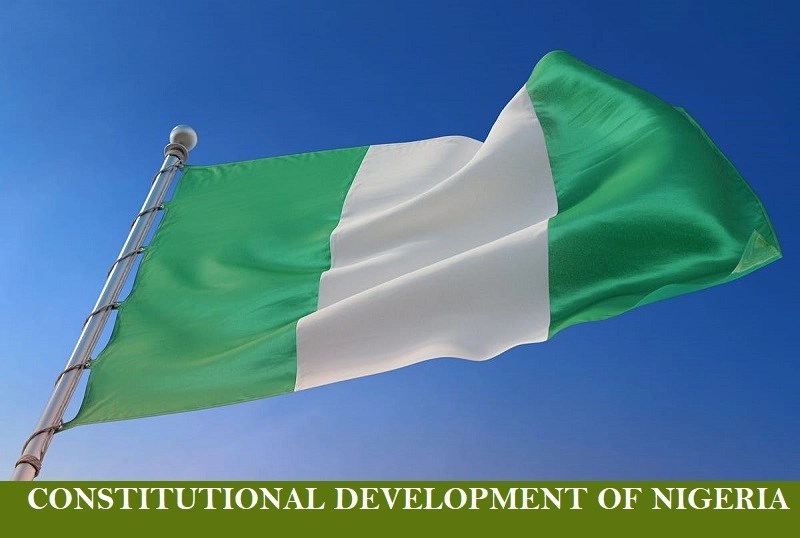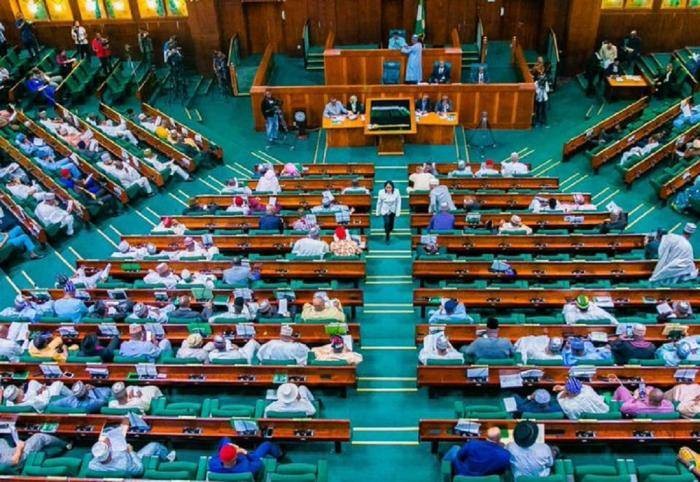
Nigeria, a country in Africa, is one of the most populous countries in Africa. It has been through a lot of historical events from 1914 till date. The British Empire colonized Nigeria, and it gained independence on October 1, 1960. After gaining independence, Nigeria had a series of military coups which saw about 15 out of 17 constitutions being overthrown within three decades, leading to civil war with thousands killed and displaced people who are yet to be compensated appropriately for their losses.
Nigeria is one of the leading countries in Africa, and it has made significant strides in its political development over the past few decades. This article will highlight some of these accomplishments.
The Constitution can be seen as a country’s most important document because without it, there would be no laws or regulations that govern what happens within that country. The Nigerian Constitution had gone through several revisions from 1914 until 1960, when Nigeria became an independent nation and beyond. This independence came into existence after being colonized by the British rulers for about 400 years.
Amendment Process of The Nigerian Constitution
No other constitution has been through as many revisions or experienced so much controversy as the Nigerian Constitution.
The military coups in Nigeria were some of the most destructive events ever, not just for Nigerians but also for their economy and politics. A series of 15 constitutions within three decades is an indication that something was wrong with how things were being done. The problem started when there was no agreement on who would lead the country after independence had been won, which led to several conflicts between different parties. One group eventually led a successful coup while overthrowing another government institution without proper procedures mandated by law.
The Nigerian Constitution gained full momentum on May 29, 1979, after a successful military coup that brought General Murtala Ramat Muhammed to power as Head of State & Commander-In-Chief Of The Armed Forces. This constitution was promulgated to restore democracy by setting up structures and procedures through which Nigerians could elect leaders at regular intervals based on adult franchise in conditions of freedom and fairness! As much as it may be referred to as an “amended version” or a mere “revised edition”, many laws were repealed, with others being substituted entirely!!! However, only few amendments were made to the Constitution of 1979, including amendment number 35, which now prohibits persons under pensionable age (60 years) from contesting for presidential elections.
According to Section 137 of this constitution, amendments are made using a two-thirds majority vote in both chambers of the National Assembly and subject to approval by an overall majority of all States’ Houses Legislatures! Finally, any proposed amendment shall be presented for presidential assent upon ratification by at least 24 states out of 36 (as stated under section 172).
Nigerian Constitutional Development From 1914 Till Date
Nigeria has gone through four different primary constitutions since independence in 1960 up to date, with each one of them providing for continuity in governance during the transition from military rule back again into civilian administration. This transition began with General Abdulsalami Abubakar, under whom it was promulgated and ratified by referendum on May 29, 1998, followed by General Olusegun Obasanjo, who led his party – PDP – to a landslide victory at elections held later the same year, June 12, 1999, after which the constitution took effect. This charter is replete with provisions meant to safeguard national interests and guarantee human rights, such as power-sharing between federal and state governments; provision for public office before an independent Judicial Service Commission, among others.
The 1914 Constitution or Lord Lugard’s Constitution
The 1914 Constitution or Lugard’s constitution was the first in Nigeria. Lugard was a British colonial administrator who became Governor-General of both Southern and Northern protectorates, amalgamated from 1861 to 1914. He is credited with being responsible for this unification process that brought various parts or communities into Nigeria today.
The salient features of his constitution were:
- It provided safeguards against the arbitrary exercise of power by governors through their constitutions, while it also gave them the freedom to legislate on matters affecting Africans without seeking approval from the Colonial Office in London where only general principles would be laid down;
- All legislative powers were conferred upon a Legislative Council consisting mainly of nominated members but having representation Protectorate Assembly – later known as House of Assembly;
- Executive powers were vested in the hands of the Governor, and he was assisted by a Council which also included nominated members. This constitution provided both direct and indirect rule since the authority to make laws on all subjects was not reserved for Britain or British colonies. It depends on the Nigerian legislature while at the same time it could be vetoed by governors acting together; and – It guaranteed Africans the right to practice their customs and established courts presided over by native judges to enforce them. According to some scholars, its major drawback is that although it recognized customary law, there is no mention about how these rights should be regulated – through legislation or otherwise. For example, taxation issues such as whether land taxes collected from ethnic communities would go into the public treasury without leaving anything behind remained unresolved.
The 1922 Constitution or Clifford’s Constitution
The 1922 Clifford’s constitution was another critical step in Nigeria’s constitutional development. It is the first document that provided for an indigenous legislature to replace the legislative council, which had existed since 1914 under Lord Lugard’s Constitution of 1914. This new Legislative Council/House of Assembly comprised some elected members selected by existing councils at provincial level and others appointed either by Governor or Governor-in-Council (cabinet). The Executive remained with power vested on Governor assisted by a cabinet whose members were also nominated mostly from among leading citizens – European officials, traditional rulers, business leaders, etc. All this arrangement did not give Nigerians much say in government except indirectly through their representatives whom they sent into these representative bodies where they would take their cue from the colonial masters. As far as an indirect rule was concerned, this arrangement provided a more organized framework for preserving and promoting colonial interest through a clear-cut structure.
The 1946 constitution or Arthur Richard’s Constitution
This constitution is another crucial step in Nigeria’s constitutional development. It was the first document that provided for a complete ministerial system of government, and, with slight modifications, it formed the basis on which post-independence constitutions were built upon. The 1946 constitution had many good features, but its major drawback was that power continued to rest primarily on colonial rulers at the federal level while various regions enjoyed some autonomy within their limited spheres – political, economic, etc.
The 1951 Constitution of Macpherson Constitution
Another constitution recognized customary law as an integral part of the Nigerian legal system and introduced a federal structure with power shared between Federal and State governments. It further allowed regional House Representatives to elect members to form the upper house – Senate, whose approval was necessary before any bill could become law.
The 1954 Constitution of Lyttleton’s constitution
The 1954 Lyttleton constitution was the first to provide for a relatively independent judiciary. It also provided for an executive President as head of state and Governor assembly consisting of members from each region who would elect Speaker, assisted by his deputies representing North East and South-East. In case of disagreement between regional houses, there should exist a joint committee whose chairman will be chosen by lot from among the two deputy speakers/vice-chancellors who will preside over any such meeting.
In addition to this arrangement, Nigeria became a federation with power shared at federal level while regions enjoyed considerable autonomy within their spheres – political, economic, etc.
The 1954/59 Constitutional Conference & Promulgation of Independence in The 1959 Democratic-Republican Constitution
Nigeria embraced parliamentary democracy as her form of government. This act came about through an intelligently crafted merger between regionalism and nationalism after years of ethnic divide and distrust brought about by British indirect rule.
The conference, which met in Lagos between January and May 1954, agreed on the form of government that Nigeria should adopt post-independence. The new republican constitution provided a federal structure with executive power vested in the head of state elected by states’ legislative houses. In contrast, each house will have independent authority to make laws over matters within its purview. The Executive consisted of the Prime Minister and Council of Ministers, each minister heading a ministry.
The 1960 Independence Constitution
Nigeria became completely independent under an Independence Constitution that provided a parliamentary form of government with power shared between the Federal and State governments. In its bid to create a “federal” structure, this constitution introduced many new features such as introduction of Constitutional cases in the High Court section; creation of the Supreme Court from Judicial Committee – Parliamentary committee on constitutional matters. This feature includes the right to appeal against any decision by states courts or tribunals to the Supreme court.
The 1960 independence constitution, like the Lyttleton’s Constitution, provided for an executive president. This provision is without any condition to check their power. It, however, further recognized traditional rulers as supreme in their respective domains.
The 1963 Republican Constitution
The 1963 Republican Constitution was drafted to curb the excesses and abuses of executive power by shifting such powers to a legislature whose members were elected from each state.
The 1963 Republican Constitution was more or less similar to the Macpherson constitution in that it provided for a federal structure. Still, it differed on some significant issues, especially those concerning legislative houses. The House Representatives became members of the House Assembly, while each statehouse became members of the upper chamber.
At this point, Nigeria had progressed from being a “unitary” to becoming a federal system with power shared between Federal and State governments. However, it was still governed mainly by a British-colonial-style constitution albeit drafted in local languages.
The 1979 Nigerian Constitution or Shehu Shagari’s Constitution
This constitution provided continuity in governance with only a few changes made by military regimes between 1966 and 1979 when civilian administration resumed again in Nigeria under General Alhaji Shehu Shagari, who led his party – National Party of Nigeria (NPN) into landslide victory at elections held in 1979. This new constitution also abolished regional ministries while power remained centralized on the federal government level but had more equitable provisions than earlier constitutions, especially regarding ethnic representation. Ethnic representation is now no longer based exclusively on population size. And instead, it requires each state to maintain a population equilibrium as far as possible.
The 1999 Constitution or the Olusegun Obasanjo’s Constitution
The 1999 constitution was another important milestone in Nigeria’s constitutional development, especially with provisions meant to guarantee human rights, federal character principle, etc. It also provided for movement from the unitary system of government towards a more decentralized one by introducing Sharia states which are autonomous entities within the federation. At the same time, power is shared between Federal Government at the National level and State Governments at regional levels. Thus, each state has exclusive legislative authority over matters not reserved for national law-making powers of the president, including land use allocation, while sharing on some issues, e.g., customs duty collection & oil revenue disbursement.
The 2011 Nigerian Constitution or Jonathan’s Constitution
Due primarily to a result of pressure from Niger Delta militants, after which peace deal known as the “Abuja Accord” was reached under President Olusegun Obasanjo leadership, this new constitution came with some significant changes such as:
introduction of state police; re-introduction of the death penalty, including provision for oil revenue sharing formula based on population, giving Sharia states absolute ownership of all mineral resources within its territory.
Nigerian Constitution as Amended
This constitution has been the current constitution in force since 1999 (revised). It was amended most recently on April 27, 2016, to include provisions such as not more than 36 states; state police; oil revenue sharing formula based on per capita income rather than population, etc.
In summary of the above, the constitutional development of the Nigerian Constitution from 1914 till date can be traced through the following stages:
- The Nigerian Councils Act of 1914: This was the first formal document that provided for a measure of political representation for Nigerians in the colonial government. It established the Nigerian Council that consisted of elected Nigerian representatives and some appointed British officials.
- Clifford Constitution of 1922: This was the first formal constitution that provided for a measure of electoral representation for Nigerians in the colonial government. It established the Legislative Council that consisted of elected Nigerian representatives and some appointed British officials.
- Richard Constitution of 1946: This was the first constitution that established regional governments in Nigeria. It provided for regional representation and powers to the regions, which were Northern, Eastern, and Western regions.
- Macpherson Constitution of 1951: This constitution increased the powers of the regional governments and provided for a measure of self-government. It also established the Federal House of Representatives and the Senate, which were the first national legislative bodies in Nigeria.
- Lyttleton Constitution of 1954: This constitution further increased the powers of the regional governments and provided for a measure of independence. It also established the Federal Executive Council and the office of the Prime Minister.
- Independence Constitution of 1960: This constitution provided for Nigeria’s independence from British rule and established the office of the President. It also established the House of Representatives and the Senate as the national legislative bodies.
- Republican Constitution of 1963: This constitution replaced the office of the Queen with the office of the President as the ceremonial head of state. It also established the Supreme Court as the highest court in Nigeria.
- Military Regimes: Nigeria experienced several military coups between 1966 and 1999, during which time the military ruled the country and suspended the constitution.
- 1999 Constitution: This constitution was promulgated in 1999 after the military regime of General Abdulsalami Abubakar handed over power to a democratically elected civilian government. The constitution established the current presidential system of government and provided for a measure of decentralization through the establishment of states and local governments.
Since the 1999 Constitution, there have been several amendments and revisions, including the 2010 Amendments, which granted more autonomy to local governments and the 2018 Amendments, which sought to address issues of electoral integrity and accountability.
Final Words
From 1914 till date, Nigeria has progressed from being a unitary to becoming a federal system with power shared between Federal and State governments. In the process, She has come a long way from being governed by a primarily British-colonial style to becoming one of few African countries with a modern democratic constitution.




